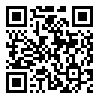Volume 14, Issue 2 (6-2022)
jorar 2022, 14(2): 136-142 |
Back to browse issues page
Download citation:
BibTeX | RIS | EndNote | Medlars | ProCite | Reference Manager | RefWorks
Send citation to:



BibTeX | RIS | EndNote | Medlars | ProCite | Reference Manager | RefWorks
Send citation to:
Seifizadeh Goldiani A A, Vatankhah H. Comparison of Rescue Workers in the Kermanshah Earthquake and Non-rescuers in the Red Crescent Society in Terms of Self-efficacy, Quality of Work Life, and Self-confidence. jorar 2022; 14 (2) :136-142
URL: http://jorar.ir/article-1-748-en.html
URL: http://jorar.ir/article-1-748-en.html
Department of Psychology, General Psychology, Islamic Azad University, Karaj Branch, Tehran, Iran
Abstract: (1421 Views)
INTRODUCTION: Various studies have demonstrated that rescuers enjoy higher levels of self-efficacy and quality of life, as compared to ordinary people. Moreover, the constant and sometimes prolonged presence of Red Crescent Society rescuers at the scene of disasters makes them more prone to the emotional impact of crises, in comparison with ordinary rescuers.
METHODS: The present study was conducted based on a causal-comparative (ex-post facto) design. The statistical population included 200 cases, and the sample size was equal to 120 (60 rescuers and 60 non-rescuers who were selected via random sampling method). Scherrer self-efficacy questionnaire (1983), quality of work life questionnaire (1973), and Coopersmith self-confidence questionnaire (1967) were used to collect data. Data analysis was performed by analysis of variance.
FINDINGS: As evidenced by the obtained results, the highest and lowest percentages of rescuers were in the age group of 20-30 (51.92%) and under 20 years (5.77%), respectively. In terms of education, the highest and lowest percentages of rescuers had a bachelor’s degree (61.7%) and high school education (1.7%). Furthermore, the highest and lowest percentages of non-rescuers were permanent (63.73%) and contract employees (1.7%), respectively.
CONCLUSION: The results pointed out that rescuers enjoyed higher levels of self-confidence, quality of work life, and self-efficacy, as compared to non-rescuers.
METHODS: The present study was conducted based on a causal-comparative (ex-post facto) design. The statistical population included 200 cases, and the sample size was equal to 120 (60 rescuers and 60 non-rescuers who were selected via random sampling method). Scherrer self-efficacy questionnaire (1983), quality of work life questionnaire (1973), and Coopersmith self-confidence questionnaire (1967) were used to collect data. Data analysis was performed by analysis of variance.
FINDINGS: As evidenced by the obtained results, the highest and lowest percentages of rescuers were in the age group of 20-30 (51.92%) and under 20 years (5.77%), respectively. In terms of education, the highest and lowest percentages of rescuers had a bachelor’s degree (61.7%) and high school education (1.7%). Furthermore, the highest and lowest percentages of non-rescuers were permanent (63.73%) and contract employees (1.7%), respectively.
CONCLUSION: The results pointed out that rescuers enjoyed higher levels of self-confidence, quality of work life, and self-efficacy, as compared to non-rescuers.
Article Type: Research article |
Subject:
Other matters related to crisis, disasters and rescue & relief
Send email to the article author
| Rights and permissions | |
 |
This work is licensed under a Creative Commons Attribution-NonCommercial 4.0 International License. |







